Related Research Articles
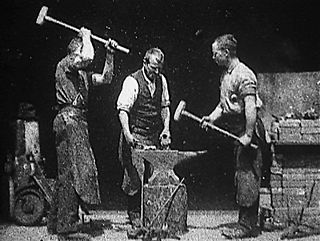
Blacksmith Scene is an 1893 American short black-and-white silent film directed by William K.L. Dickson, the Scottish-French inventor who, while under the employ of Thomas Edison, developed one of the first fully functional motion picture cameras. It is historically significant as the first Kinetoscope film shown in public exhibition on May 9, 1893, and is the earliest known example of actors performing a role in a film. It was also the first U.S. motion picture film ever copyrighted that same year. 102 years later, in 1995, Blacksmithing Scene was selected for preservation in the United States National Film Registry by the Library of Congress as being "culturally, historically, or aesthetically significant". It is the second-oldest film included in the Registry, after Newark Athlete (1891).

Jam Session is a 1942 short film, directed by Josef Berne, which shows Duke Ellington and his orchestra performing "C Jam Blues".

Jammin' the Blues is a 1944 American short film made by Gjon Mili and Norman Granz in which a number of prominent jazz musicians re-create the jam-session atmosphere of nightclubs and after-hours spots. It features Lester Young, Red Callender, Harry Edison, Marlowe Morris, Sid Catlett, Barney Kessel, Jo Jones, John Simmons, Illinois Jacquet, Marie Bryant and Archie Savage.

The Land Beyond the Sunset is a 1912 short, silent drama film which tells the story of a young boy, oppressed by his grandmother, who goes on an outing in the country with a social welfare group. It stars Martin Fuller, Mrs. William Bechtel, Walter Edwin and Bigelow Cooper. Produced by Edison Studios in collaboration with the Fresh Air Fund, the screenplay was written by Dorothy G. Shore and directed by Harold M. Shaw.
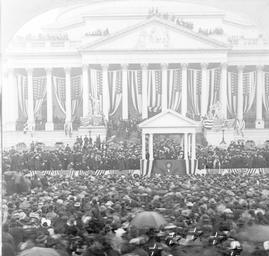
President McKinley Inauguration Footage is the name given to two different short documentary films which were combined as one. The two titles are President McKinley Taking the Oath and President McKinley and Escort Going to the Capitol. The two show President William McKinley arriving at the United States Capitol in order to take the oath of office of the president of the United States as part of his second inauguration on March 4, 1901.
The following is an overview of the events of 1896 in film, including a list of films released and notable births.

The Widow Jones is a musical comedy created by the writer John J. McNally as a star vehicle for the actress and singer May Irwin. The musical used song material by a variety of song writers which used a "Negro dialect". Premiering at the Boston Museum theatre and backed by the Boston producers Rich & Harris, the play toured in cities through the United States in 1895-1896; including two separate runs at Broadway's Bijou Theatre. The work is best remembered today for its Act 1 kiss scene which was re-created by Irwin with her co-star John C. Rice as a short film in Thomas Edison's The Kiss in 1896.
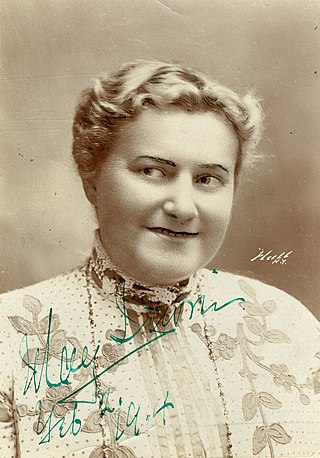
May Irwin was an actress, singer and star of vaudeville. Originally from Canada, she and her sister Flo Irwin found theater work after their father died. She was known for her performances as a coon shouter and for her recordings.
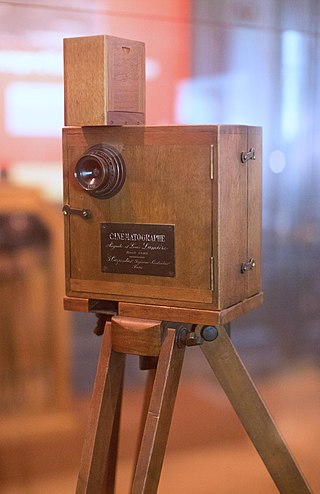
Cinematograph or kinematograph is an early term for several types of motion picture film mechanisms. The name was used for movie cameras as well as film projectors, or for complete systems that also provided means to print films.

Vitascope was an early film projector first demonstrated in 1895 by Charles Francis Jenkins and Thomas Armat. They had made modifications to Jenkins' patented Phantoscope, which cast images via film and electric light onto a wall or screen. The Vitascope is a large electrically-powered projector that uses light to cast images. The images being cast are originally taken by a kinetoscope mechanism onto gelatin film. Using an intermittent mechanism, the film negatives produced up to fifty frames per second. The shutter opens and closes to reveal new images. This device can produce up to 3,000 negatives per minute. With the original Phantoscope and before he partnered with Armat, Jenkins displayed the earliest documented projection of a filmed motion picture in June 1894 in Richmond, Indiana.

Actuality film is a non-fiction film genre that uses footage of real events, places, and things, in a similar way to documentary film. Unlike documentaries, actuality films are not structured into a larger narrative or coherent whole. In practice, actuality films preceded the emergence of the documentary. During the era of early cinema, actualities—usually lasting no more than a minute or two and usually assembled together into a program by an exhibitor—were just as popular and prominent as their fictional counterparts. The line between "fact" and "fiction" was not as prominent in early cinema as it would become once documentaries became the predominant non-fiction filmmaking form. Actuality as a film genre is related to still photography.

Lady Helen's Escapade is a short American comedy film produced in 1909, directed by D. W. Griffith. It is about the escapades of Lady Helen working as a domestic in a boarding house.

The Blue Bird is a 1918 American silent fantasy film based upon the 1908 play by Maurice Maeterlinck and directed by Maurice Tourneur in the United States, under the auspices of producer Adolph Zukor. In 2004, this film was deemed "culturally, historically, or aesthetically significant" by the United States Library of Congress and selected for preservation in its National Film Registry.

Garlic Is as Good as Ten Mothers is a 1980 documentary film about garlic directed by Les Blank. Its official premiere was at the 1980 Berlin Film Festival.

The Evidence of the Film is a 1913 American silent short crime film directed by Lawrence Marston and Edwin Thanhouser, starring William Garwood.
The decade of the 1890s in film involved some significant events.
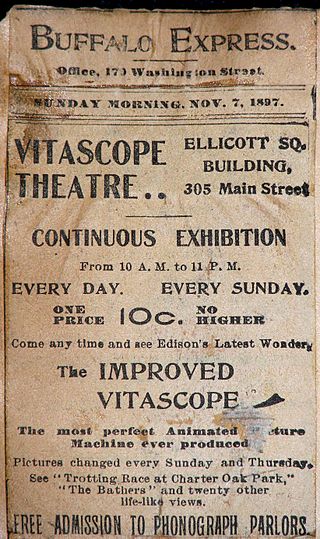
Edisonia Hall was a generic name for exhibition halls that displayed the various inventions of Thomas Alva Edison's company. These included the phonograph, the Vitascope, the Kinetoscope and other such devices.

B.F. Keith's Theatre (1894–1928) in Boston, Massachusetts, was a vaudeville playhouse run by B.F. Keith. It sat across from Boston Common in the city's theatre district, with an entrance on Tremont Street and another on Washington Street. Personnel included Keith, E.F. Albee and H.E. Gustin. Virgilio Tojetti painted some of the interior decorations. In 1939, the theater was converted to a movie theater named the Normandie.
Venezuela was introduced to cinema as a for-profit industry in the 1890s, when the medium became international. There were at least eight national films made in the decade, by three groups of filmmakers — one of the groups was based in Maracaibo and one was based in Caracas. The first film screening in the nation may have taken place as early as 1894, but is generally reported as 1896, with this later date being the first scheduled public screening.

Norman C. Raff and Frank R. Gammon were two American businessmen who were known for distributing and promoting some of the Edison Studio films, and founding their own business, which was called The Kinetoscope Company.
References
- ↑ "Preserving the Silver Screen (December 1999) - Library of Congress Information Bulletin". www.loc.gov. Retrieved 2020-11-18.
- ↑ "Complete National Film Registry Listing". Library of Congress. Retrieved 2020-11-18.
- 1 2 3 Eagan 2010, p. 5.
- ↑ Williams 2008, p. 27.
- ↑ "The Vitascope". The Buffalo Commercial. June 8, 1896. p. 11. Archived from the original on November 26, 2022 – via Newspapers.com.
- ↑ Foster 2000, p. 13.
- ↑ Sex in Cinema: Pre-1920s
- ↑ The Chap-book, Volume 5, Number 5, July 15, 1896
- ↑ Dengler, Ralph S.J. (1979). "The First Screen Kiss and "The Cry of Censorship"". Journal of Popular Film and Television. 7 (3): 267–272. doi:10.1080/01956051.1979.9944202.
- ↑ "Brief Descriptions and Expanded Essays of National Film Registry Titles". Film Registry - National Film Preservation Board - Library of Congress. Retrieved 2018-12-26.
- ↑ Gaudreault, André and Lacasse, Germain (1996). "The Introduction of the Lumière Cinematograph in Canada", Canadian Journal of Film Studies, Volume 5, No. 2.